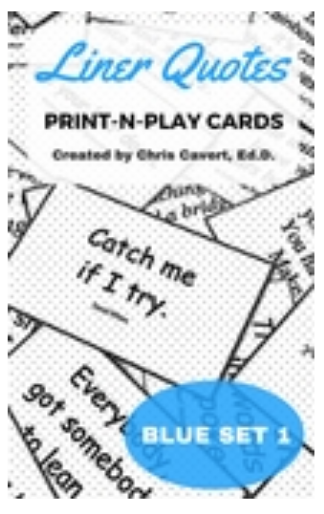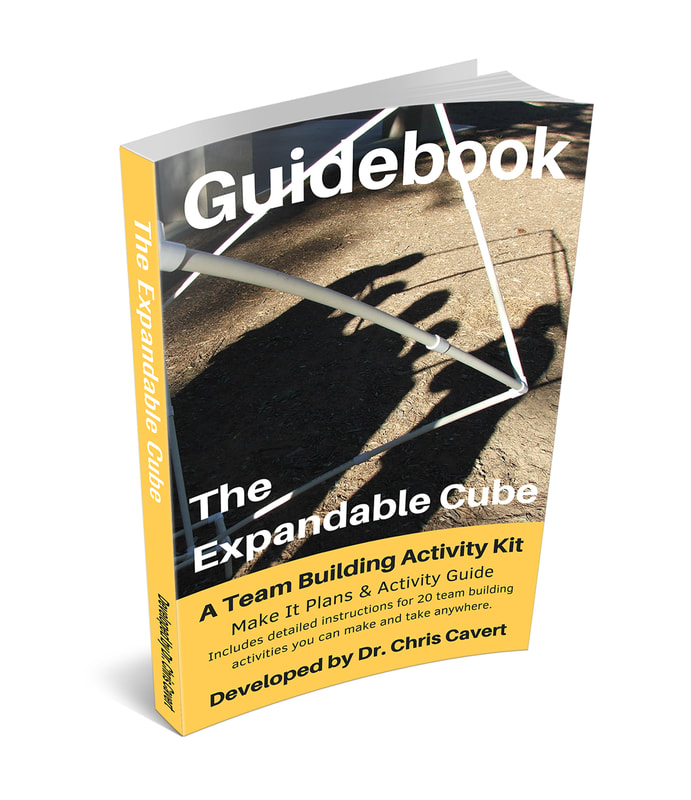Why not scramble up the letters of each person's first name and then play Card Return? I was thinking to myself, "If people know each other's names already they will have a database from which to work. When they see a scrambled name they could decode it in reference to the database." Since trying this variation of Name Cards a few times, it's worked out well and has proven to include some interesting insights. Here's how I've been playing...
Before getting started with the program I ask all the participants to use a marker (I've left a bunch on the table) to write out their first names nice and BIG on an index card, but scramble up the letters - I like to use the 4 inch by 6 inch cards. (I leave an example of my name card on the table - you see mine in the picture: Hrsic.) After writing out their name I ask them to hold on to their card and form a large circle.
Circle Up (I learned this great organizer from Mark Collard Playmeo.com - a variation, I believe, of Quick Line-Up). Once we're all in a circle I tell my group, "This is our 'Perfect Circle.' For our perfect circle you will need to remember the person standing to your left and right - say hello to them now." I go on to say, "Any time I call out, 'Perfect Circle' please get into this exact configuration - with the same two people standing next to you." I then provide an example. "If I were to do this..." I move across the room to a different spot and call, "Perfect Circle! - what do you do?" This first time it takes a little time but the group usually figures they need to rearrange into the perfect configuration from where I'm standing. I move a couple more times so they get the idea - I also try to infuse a little excitement and energy into the crowd with this one to get them going.
Blind Shuffle After the group has the Perfect Circle thing down, I teach them the blind shuffle. "Please hold your scrambled name card face down - the name facing down - towards the floor. Hold the card somewhere between your chin and your waist - basically, in a way so that the names cannot be seen. Now move around the room and exchange cards at least five times, or until I say STOP - in about 30 seconds. When I say STOP, do not look at the scrambled name on the card you end up with. Okay? Ready? Shuffle! STOP!
Card Return After I tell the group to STOP, I give them the challenge. "When I say the word that's spelled, "G" "O" the timer will start (I usually keep the time, but that doesn't mean someone in the group couldn't be the timer), and you can turn over the card you are holding. Your objective is to figure out the name on the card and then return it to the person to which it belongs. When you have your own card back you must get yourself into Perfect Circle order in relation to where I'm standing. When everyone is in the Perfect Circle the time will stop." After asking for and answering questions, I say "GO!"
As the group is moving around to return cards I find another place in the area to stand - changing up the perfect circle location. (I also need to find out who belongs to the card I ended up with - yes of course I'm playing!)
After the first round we talk a little bit about the challenge and if there is anything they would like to remember for the next attempt. I do challenge the group to achieve a better time over a couple more tries. Here are a few fruitful topics that have come up for me and my groups after leading this one three times so far:
- It was more difficult to decode (interpret) the longer names. (We did a little metaphorical connection to communicating information.)
- There were four tasks - figure out the name on the card you're holding, return what you have, get what you need, and find your place in the circle. How did each task play out for each person?
- What sort of help took place - What did it sound like? What did it look like?
So, a simple variation has turned out to be a keeper for me. Let me know what you think. Leave a comment below.
All the best,
Chris Cavert, Ed.D.







 RSS Feed
RSS Feed